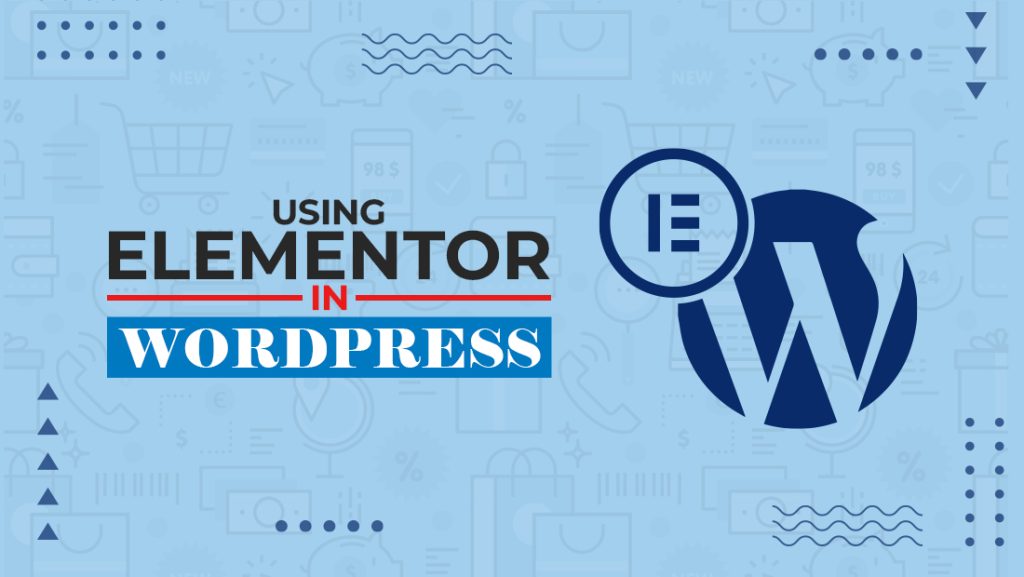Introduction
How to use elementor in WordPress? We have explained in this blog.In the dynamic world of WordPress design, Elementor has emerged as a game-changer, providing users with a user-friendly interface and powerful features to create visually appealing websites. This beginner’s guide will walk you through the fundamental steps of using Elementor in WordPress.
What is Elementor?
Elementor is a popular drag-and-drop page builder plugin for WordPress. It allows users to design and customize their websites without any coding skills. With its intuitive interface, Elementor has become a go-to tool for both beginners and experienced web designers.
Why Choose Elementor for WordPress Design?
- User-Friendly Interface: Elementor’s drag-and-drop interface makes it easy for users of all skill levels to create and edit web pages.
- Live Editing: See your changes in real-time as you make them, eliminating the need for constant previews.
- Extensive Widget Library: Elementor offers a wide range of widgets, from basic text and image widgets to advanced ones like sliders and forms.
- Mobile Responsiveness: Design with confidence, knowing that your creations will look great on various devices.
Now, let’s delve into the step-by-step process of using Elementor to enhance your WordPress site.
Step 1: Installing Elementor on Your WordPress Site
Before you can start using Elementor, you need to install it on your WordPress site. Follow these simple steps:
- Login to Your WordPress Dashboard:
- Navigate to the admin area of your WordPress site.
- Go to Plugins:
- In the left-hand menu, click on “Plugins.”
- Add New Plugin:
- Click on “Add New” and search for “Elementor.”
- Install and Activate:
- Click “Install Now” next to the Elementor plugin, and then activate it.
Congratulations! You’ve successfully installed Elementor on your WordPress site.
Step 2: Creating a New Page or Editing an Existing One
With Elementor installed, you can start creating new pages or edit existing ones:
- Create a New Page:
- In the WordPress dashboard, go to “Pages” and click “Add New.”
- Edit an Existing Page:
- Alternatively, you can edit an existing page by selecting it from the list of pages.
Step 3: Launching the Elementor Editor
Once you’re on the page editor screen, you’ll see a button that says “Edit with Elementor.” Click on it to launch the Elementor editor.
Step 4: Exploring the Elementor Interface
The Elementor interface consists of three main sections:
- Widgets Panel:
- On the left, you’ll find a panel with various widgets categorized for easy access.
- Canvas:
- The center area is your canvas, where you’ll build and design your page.
- Tools and Settings:
- On the left, above the widgets panel, you’ll find additional tools and settings.
Step 5: Drag-and-Drop – Building Your Layout with Widgets
Elementor’s magic lies in its drag-and-drop functionality. Simply drag widgets from the panel to your canvas and drop them where you want them.
- Add Sections:
- Start by adding sections to your page.
- Add Widgets:
- Drag widgets like text, image, heading, or any other element you need.
- Customize Widgets:
- Click on a widget to customize its content, style, and layout.
Step 6: Customizing Design Elements with Advanced Options
Elementor offers advanced design options for fine-tuning your page:
- Advanced Design Settings:
- Access advanced settings for each widget to customize every aspect.
- Typography and Colors:
- Customize fonts, colors, and spacing to match your brand.
Step 7: Ensuring Responsiveness – Designing for Different Devices
- Toggle Device Views:
- Elementor allows you to preview and edit your design for desktop, tablet, and mobile views.
- Responsive Editing:
- Adjust elements for each device to ensure a seamless user experience.
Step 8: Unlocking More Features with Elementor Pro
Consider upgrading to Elementor Pro for additional features:
- Theme Builder:
- Create custom headers, footers, and other theme elements.
- Form Builder:
- Design and customize forms directly within Elementor.
Step 9: Dynamic Content Capabilities with Elementor Pro
Explore dynamic content features with Elementor Pro:
- Dynamic Elements:
- Use dynamic content for personalized user experiences.
Step 10: Optimizing Images and Visuals in Elementor
- Image Optimization:
- Elementor provides tools for optimizing images, ensuring fast-loading pages.
- Visual Enhancements:
- Learn how to make your visuals more appealing and impactful.
Step 11: SEO Best Practices with Elementor
- SEO-Friendly Widgets:
- Utilize Elementor’s SEO-friendly widgets for better search engine optimization.
- Optimizing Content:
- Implement SEO best practices when creating content with Elementor.
Conclusion: Elevating Your WordPress Design with Elementor
In conclusion, Elementor is a versatile and powerful tool that empowers users to create stunning and responsive websites without the need for coding. By following this guide, you’ve taken the first steps towards mastering Elementor and elevating your WordPress design.





